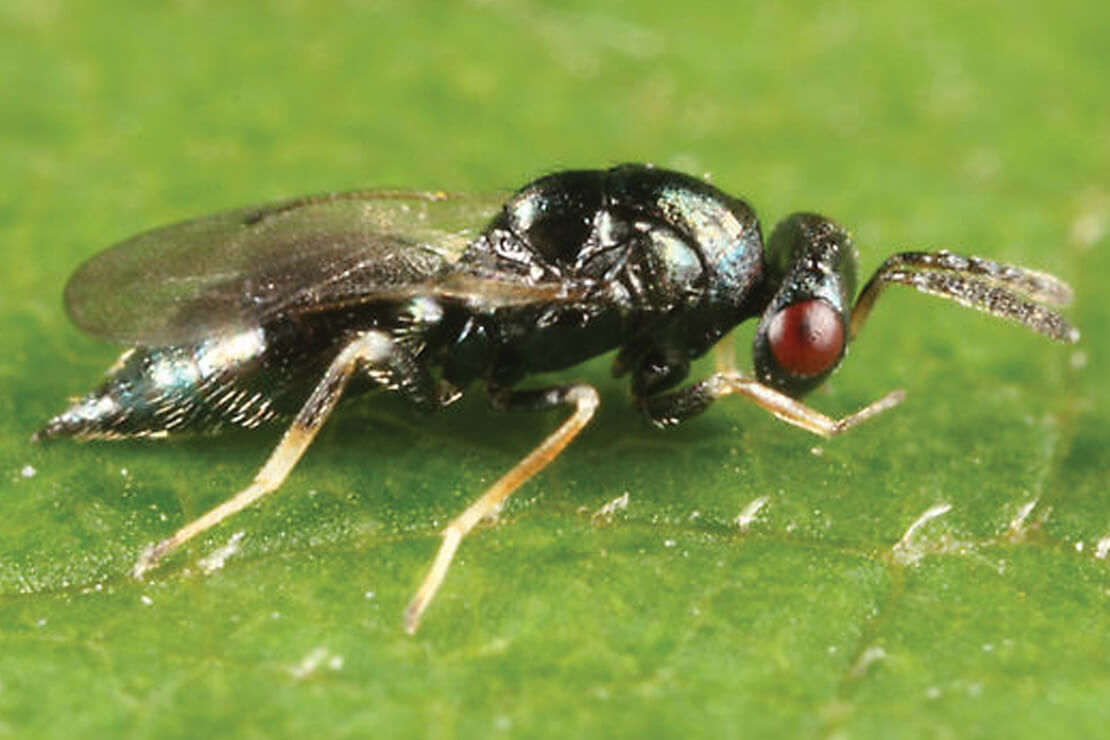August 15, 2014

Tetrastichus planipennisi, a natural enemy of emerald ash borer, offers hope as a management tool.
Wasps released to combat EAB
With most of Ontario infested by the emerald ash borer (EAB), CFIA has approved the release of a stingless wasp as new biological control agents.
Wasps have been released in limited areas in Huron County, southwestern Ontario, by Natural Resources Canada.
The wasp is Tetrastichus planipennisi, and believed to originate from the same region in China as the EAB. The wasp is a natural predator of EAB in China.
When the eggs hatch, the young wasps feed on the host larvae, killing them. The wasps will not eliminate populations of EAB entirely, but it is hoped that they will reduce the population to a point where EAB is manageable.
CFIA says the approval of biological control agents for use against EAB offers promise for slowing its spread over time. The federal agency says that although it will take time for wasp populations to build up and for the effectiveness to be evaluated, it is taking a long-term view to finding innovative ways to manage the EAB situation.
A Canadian Forest Service report shows that the infestation of EAB will cost the country as much as $2 billion over the next 30 years to cover the costs for treatment, removal or replacement of infected ash trees.
The report also found that up to 98 per cent of the infested ash trees die within five years.
A map showing the spread of EAB in Ontario is available at http://gfl.me/x2cr.
Wasps have been released in limited areas in Huron County, southwestern Ontario, by Natural Resources Canada.
The wasp is Tetrastichus planipennisi, and believed to originate from the same region in China as the EAB. The wasp is a natural predator of EAB in China.
When the eggs hatch, the young wasps feed on the host larvae, killing them. The wasps will not eliminate populations of EAB entirely, but it is hoped that they will reduce the population to a point where EAB is manageable.
CFIA says the approval of biological control agents for use against EAB offers promise for slowing its spread over time. The federal agency says that although it will take time for wasp populations to build up and for the effectiveness to be evaluated, it is taking a long-term view to finding innovative ways to manage the EAB situation.
A Canadian Forest Service report shows that the infestation of EAB will cost the country as much as $2 billion over the next 30 years to cover the costs for treatment, removal or replacement of infected ash trees.
The report also found that up to 98 per cent of the infested ash trees die within five years.
A map showing the spread of EAB in Ontario is available at http://gfl.me/x2cr.